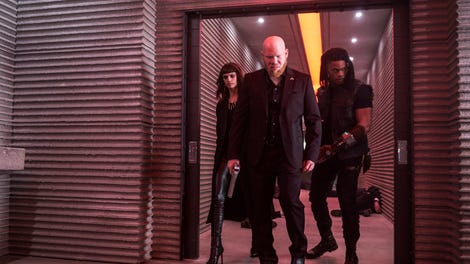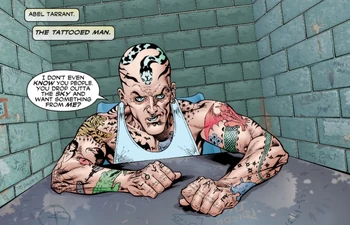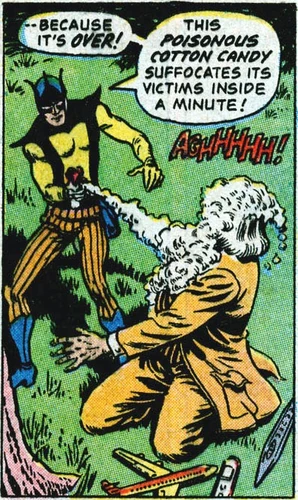The Flash, Season 4, Episode 18: Lose Yourself

I really want to say good things about the Flash. It has one of the most charismatic casts on superhero television, It tries to keep a balance of fun and drama (Legends leans entirely to he former and both Arrow and Black Lightning lean entirely to the latter) but jeez... it's just been really bleh this season, isn't it? Thinker's grand plan isn't as nebulous as Savitar or especially Zoom, something I will readily admit, but on the other hand, the way they go through things feels just so... boring.
Add that to insanely inconsistent episode-to-episode writing, and we have Ralph Dibny here being a gigantic "why aren't we taking this threat seriously?" bag of anger, advocating killing DeVoe as the final solution. Remember the previous episode when he was "joke in the face of grim seriousness" Ralph? Yeah. It leads to a decent moment when Ralph admits that he's trying to protect his friends, and he doesn't care if he damns his newfound morality, which is touching... but it doesn't feel any less consistent.
And, pfft, it's not like Barry hasn't killed before. Remember season two? Atom Smasher? Sand Demon? Barry totally killed those guys. I remembered being super taken aback.
The episode centers around the team finding the final metahuman, Edwin Gauss, a.k.a. the Folded Man, someone who can open pocket dimensions at will. And he at least has a personality, even if that personality is basically summed up as "stoner". But Thinker ends up attacking STAR labs while Flash, Vibe and Killer Frost bugger off to go into Thinker's base, kills Folded Man, Null and Melting Point... off-screen to boot! And Melting Point didn't even get an appearance after the whole "hey, wanna be part of our superhero team?" debut episode. Yeah, plot device indeed. And then he gets to fight Ralph, who spares him... only for Thinker to escape and body-jump into Ralph's body, saving his body for last since Ralph's powers is the only one that won't die as a side effect and can shapeshift into his original face. It's a nice reason to why DeVoe saves Ralph for last, I guess, but the entire episode is just honestly so bland and goes through its motions in a predictable step-by-step way that it's not even that entertaining. Plus, the show doesn't really do a particularly good job showing DeVoe as a super-smart bloke that out-thinks everyone. Like... why doesn't he use Melting Point's powers to take out Vibe and Flash's powers as well? Why doesn't he go after Folded Man first, and then use Folded Man's powers to instantly zip to the other metahumans? I dunno. For someone whose entire power is being super-smart, he really raises a lot of questions, and I'm a sleepy man who's not really that smart.
Harry, meanwhile, joins DeVoe in being a super-smart character that acts like a complete moron. Yes, the addiction and angry withdrawal symptoms in his overuse of the Thinking Cap (now powered by Dark Matter siphoned by original Gideon) is well-executed by Tom Cavanagh, but it ends up feeling like a needless distraction, and when Harry ends up overloading himself with the Cap and knocking himself out during the climax it's more stupid-funny than tragic.
Meanwhile, on other news, Joe beats up a Samuroid on his own. You know, the super-powered robots who beat Kid Flash and Vibe single-handedly, and caused the team to freak out and go 'shit, we need Barry!' And Joe only had a sword and a handgun. Off-screen, sadly. BOO!
Anyway, it's clearly meant to be the 'darkest hour' for Team Flash. All the bus metahumans are taken down by the Thinker and absorbed, Ralph's body is taken over by Thinker, Killer Frost is apparently gone, Thinker stole a vial of dark matter, and Harry's head got fried. We really could've done a lot better in this episode, though. It's not even dramatic or dark. It's just dry. And other than the neat bit of Thinker channeling all the superpowers in his body to take down all three Team Flash members, there's not even much excitement in this episode.
DC Easter Eggs Corner:
- Edwin Gauss is the minor Atom supervillain Folded Man, whose backstory we talked about a couple episodes ago when he was first name-dropped.
- While "Sonic Scepter" is original to the show, Tuning Fork-esque plot devices is used multiple times in DC comics, particularly in the Infinite Crisis maxi-series where a multiversal tuning fork tower was a major plot point.
- Samuroids, last seen in the first episode in this season, return as little ground soldiers in this episode.
- Melting Point, not seen since his debut episode, and Null, captured by Team Flash last episode, return briefly as bodies on Thinker's feet when he absorbed the powers of the Folded Man. You might miss it. I certainly did.





















